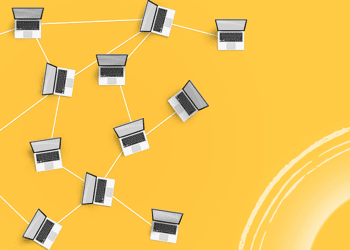The world has rapidly changed, as we all know. How we obtain care from our physicians and healthcare workers is no exception. Telemedicine is making a major impact, allowing medical practices to care for patients from a safe distance. Although this major shift in healthcare practices has been brought to the forefront because of COVID-19, its effectiveness will likely cement it as a permanent fixture of modern healthcare.
What is Telemedicine?
Telemedicine is the blanket term for the use of telecommunications technology that allows healthcare professionals to interact with patients and other medical and administrative professionals from a distance. This enables them to provide many diagnostic and treatment options, as well as supportive interactions, while precluding the need for travel or unnecessary exposure to potentially threatening illnesses.
Originally envisioned as a method for certain patients to interact with specialists who may not be available locally, the onset of COVID-19 has brought it into mainstream use. This is true for telemedicine, which is specifically the treatment of patients through electronic means without an in-patient visit, as well as telehealth, which involves a broader scope that includes administrative collaboration, provider training, and other supportive services.
According to an article from Business.com:
- There are about 200 telemedicine networks currently in operation across the US.
- More than half of all the hospitals in the US now use some form of telemedicine services.
- The Veterans Health Administration (VA) is using digital health services to reach more than a half a million veterans each year.
Today’s pervasive use of smart devices and widespread high-speed Internet availability has enabled the use of high-quality video conferencing and data transmission to accomplish telemedicine and telehealth tasks. However, this major technological shift has required all medical practices and healthcare organizations to implement serious and fast upgrades to their communications systems.
What are the Telemedicine Network Requirements for Physicians and Healthcare Professionals?
Healthcare organizations and ISPs have had to work together to formulate and implement workable networking and communication solutions that enable telemedicine. Especially over the past several months, they have discovered what is required to provide the most effective telemedicine system.
Bandwidth
State and federal law governs many aspects of healthcare, and this includes IT regulations for telemedicine. Of course, all healthcare organizations must have enough bandwidth to support the Electronic Health Record (EHR) system.
Moreover, the Federal Communications Commission (FCC) has issued guidelines that stipulate the necessary bandwidth for different sizes of medical practices and organizations that utilize telehealth. These include bandwidth ranges from 15 Mbps to 1 Gbps download speeds and latency at less than 50 milliseconds.
The Congressional Research Service suggests that telehealth platforms operate at a 4 Mbps downstream transmission capacity and 1 Mbps upstream transmission capacity to ensure proper service speed for both patients and providers.
Guaranteed Uptime
Medical practices and healthcare organizations rely on the timely transmission of data to make what can be life-and-death decisions. They cannot afford frequent or even occasional periods of downtime. FCC recommendations place the required guaranteed uptime from an ISP at 99.9%. This means an ISP must provide exceptional reliability and fast service when problems arise.
Network Redundancy and Diversity
Of course, completely random events can cause an Internet and communications outage at the most inopportune times. This is why medical practices and healthcare organizations must have network redundancy and diversity in place.
Redundancy is using two completely different means of connecting to the Internet — such as fiber and dedicated wireless. One is used as the primary connection and the other is the secondary, or backup, connection. Diversity involves separating all the factors of how your redundant Internet connections provide connectivity to your business.
Dedicated Network
A dedicated network is absolutely necessary to meet the needs of compliance. In order to conform to HIPAA telehealth regulations, your network must be secure and only allow authorized users to have access to EHR data and other protected personal and health information.
In addition, your network must include robust security measures to prevent data breaches, while still facilitating secure communication between healthcare professionals, administrators, and patients.
MHO Fixed Wireless Internet and Networking for Healthcare
MHO provides fast, secure, and reliable Internet and Networking solutions for healthcare organizations of all sizes. Want an example? Check out this testimony from Hospital Corporation of America (HCA).
- MHO point-to-point fixed wireless solutions offer True Diversity to ensure all of your mission-critical applications are always available.
- Our Guaranteed Reliability supports your operations with the gold standard in guaranteed uptime, plus critical response times when you need help.
- MHO High-performance Private Networks securely connect all of your practice or organization locations while providing access and communications to necessary stakeholders and patients.
Call us today at (877) WANT MHO or connect with us online to check availability of our Fixed Wireless Internet and Networking for healthcare operations in your area, or to inquire about future expansion locations near you.




![[Infographic] Fixed Wireless: What You Need To Know](https://blog.mho.com/wp-content/uploads/2017/06/Screenshot-2025-06-24-141710.png)
![[Infographic]: What Downtime Really Costs You](https://blog.mho.com/wp-content/uploads/2017/08/Screenshot-2025-06-24-141621.png)
